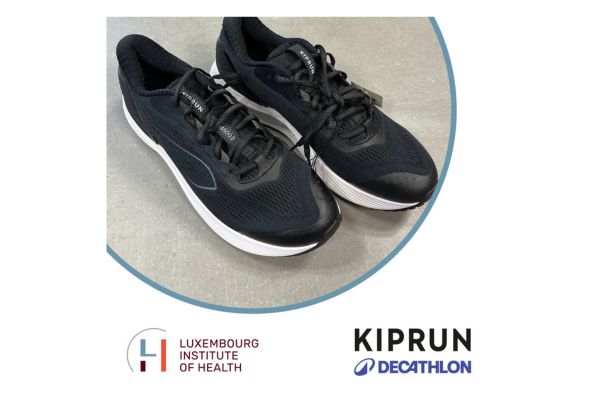 Credit: LIH via Facebook
Credit: LIH via Facebook
On Thursday 27 March 2025, the Luxembourg Institute of Health (LIH) announced the launch of a new large-scale study to investigate running shoe (trainers) cushioning and injury prevention.
In a press release, the LIH stated that its Physical Activity, Sport and Health (PASH) research group, in partnership with French sporting goods retailer Decathlon, will explore the role of running shoe cushioning in injury prevention. This large-scale project is expected to analyse the impact of different cushioning solutions on injury risk, in a cohort of over 1,000 runners over a six-month period.
The study is due to specifically examine how cushioning material at both the rear and front of running shoes influences the likelihood of injury. Three different shoe types will be tested, with each participant receiving a free pair of running shoes and sharing their running data via their sports watch. Participants will also report any injuries on a weekly basis, through a dedicated web application and return the shoes at the end of the study for further analysis.
“This new study builds upon a long and fruitful collaboration with Decathlon and aims to provide fresh insights into the effect of cushioning on injury risk,” said Dr Laurent Malisoux, PASH group leader at the LIH.
Decathlon’s Cédric Morio added: “As a leading designer and manufacturer of sports equipment, Decathlon and [running brand] Kiprun are delighted to collaborate with the LIH on this important study. Understanding the role of running shoe construction in injury prevention will help improve the health and well-being of runners worldwide.”
This research follows a previous large-scale study conducted by the LIH and Decathlon from 2017 to 2020, which analysed over 24,000 running sessions covering 220,000 km in over 800 leisure-time runners. The findings revealed that greater cushioning was associated with a lower risk of running-related injuries. Notably, runners wearing shoes with lower cushioning had a 52% higher injury risk and injuries predominantly affected the ankles (26%), knees (22%) and lower legs (18%). These insights underscore the significance of shoe design in preventing injuries, particularly for lighter runners, who appeared more susceptible to injuries when using less cushioned shoes.
With this new study, LIH researchers aim to further understand the properties of cushioning, especially new “extra soft” foam cushions at both the rear and the front of the shoe and how they affect the risk of injury. The results are expected to provide valuable guidance for both runners and shoe manufacturers, influencing future designs to enhance injury prevention and running performance.
The researchers have invited those interested in participating in the study to apply via: https://www.lih.lu/en/research-scope/research-department/department-of-precision-health/physical-activity-sport-and-health/decathlon-run-study/
HOM








